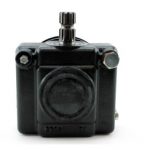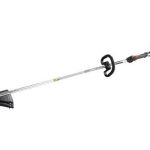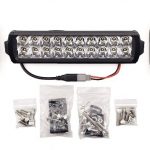
Consider size, tread, traction and ply rating when selecting replacement tires for your riding lawn mower.
(Courtesy: Buriram Ruangsangthai at flickr.com)
The lawn mower is arguably the most important tool in the shed when it comes to grooming your lawn. No doubt, you know

Plastic or metal tires may suffice on a walk-behind lawn mower.
(Courtesy: Melany Clark at flickr.com)
how to maintain the inner workings of the lawn mower and how to sharpen or when to replace the blade. However, you may be taking an important part of your lawn mower for granted. Have you thought about the tires?
Just like any part on a lawn mower the tires can also wear out or get damaged and need to be replaced. The question is: Do you know how to go about selecting replacement tires?
Things to Consider Before You Actually Buy the Tire
It is essential to select tires that will perform on the terrain of the lawn. For example, if your lawn is fairly flat, then a tire that is less rugged and grippy would suffice. If you need to equip a walk-behind mower, then you may want to consider plastic or metal tires. Tires that are appropriate for a riding mower are generally inflatable with air just like car tires.
If your lawn has a hilly, steep somewhat rough terrain, then you may want to focus on tires that have more of a grip. If you think you need extreme grip, consider spiked tires. However, be aware that spiked or studded tires will rip up the lawn.
Experts suggest that you concentrate on tires that minimize damage to the lawn. This would include tires with flat treads. Keep in mind that this style of tire performs best where traction is not an issue. An ideal tire would be one with a flat tread and beveled shoulders if the terrain of your lawn is not much of an issue. These tires are turf-friendly and have sufficient traction. If you need a little bit more traction, then select tires with ribs. They too will work fine on the turf.
When considering tread, you need to also think about how you use the mower and the axle on which the tire will be placed.
For example, if you are replacing tires for the front of a riding mower and it is not a drive axle, then a ribbed tire will probably suffice. These tires are also referred to as a multi-rib tire. The rib tire features circumferential or circled grooves around the tread. This is ideal because the grooves will not damage the turf.
A traction tire should be used on the rear or drive wheels. Although several styles are available, your selection of a traction tire should be based on how much traction you need and how you feel about compaction of your turf. If you want less compaction, select a tire with traction that creates less compaction. If compaction is not an issue to you, then go ahead and select a tire with traction that may create more compaction. Ask your dealer for assistance when determining what tires fit your requirements.
There are also tires that feature “special treads.” A smooth tread is used for putting greens on golf courses. Cleated tractor-style treads are commonly used on construction equipment.
Keep in mind that inflated tires require a certain amount of maintenance. For example, on this style of tires, you will have to maintain the appropriate air pressure. So you will need to check their air pressure periodically. If you don’t intend to check the conditions of the tires periodically, then it may be best to consider plastic or steel tires.
Use Data On Your Previous Tires To Select New Ones
Questions pertaining to the proper size of the tire can be answered by simply looking on to the sidewall of your old tire. Such an inspection would lead to the discovery of numbers looking like this — 14×8.50-8. These numbers indicate the size of the tire when it is properly inflated. The first numbers –- 18 –- represent the approximate height of the tire. The numbers 8.50 indicate the width. 8.50 means 8-1/2-inches wide. The last number –- 8 -– is the diameter of the wheel or rim the tire is mounted on. So, in this case, the tire’s rim diameter is 8-inches.
Additional information you can discover from the sidewall of the tire is its ply rating. Ply rating defines the strength or load carrying capacity of the tire. It is described as LRB or LRC. LR is for load range. It may also appear as 4PR, 6PR, etc. PR means ply rating. Do not replace a tire with one that has a lesser ply rating. Keep in mind that the letters do not indicate the actual play rating of the tire. What the letters and numbers are telling you is that the tire has the strength of say a 4-ply rating.






